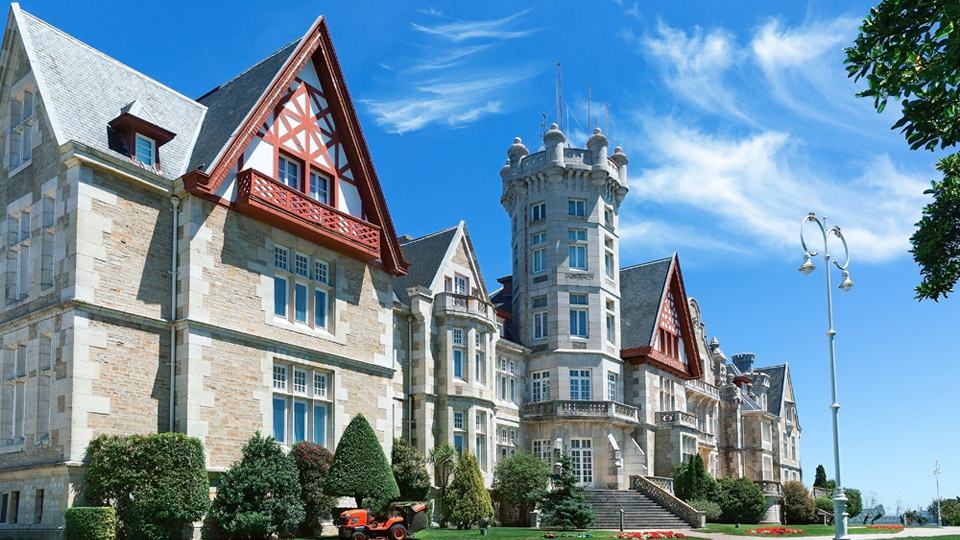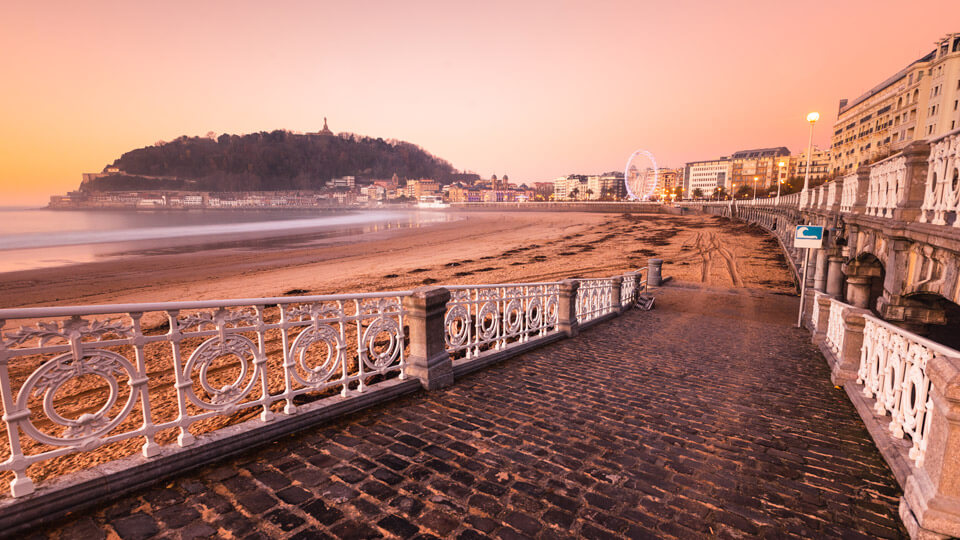Northern Spain
NORTHERN REGION OF SPAIN
TRIPS TO SPAIN:
Travel to Northern Spain
Northern Spain is famous for its gastronomy, its elegant cities, which contrast with small villages, natural landscapes, and sandy beaches. If you’re looking to spend holidays in Spain, but have never made it to the northern lands, this is for you.
Many people head for Northern Spain above all to discover the country’s profoundly natural side. In some magnificent landscapes of mountain, river and forest, bordered by the ocean, the character of Spain’s northern lands makes a lasting impression on whoever sees it.
THE NORTHERN SPAIN
Northern Spain offers the perfect combination of magical villages, wide green landscapes, and dreamy beaches. If it’s not yet on your Spain bucket list, add it now!
Northern Spain’s gentler climate suits many tourists, especially the more active ones. Once you realize what it’s all about, you may wonder how it’s escaped you all this time.
Asturias, Leon and Cantabria bring the mountains and the sea closer together
MAP OF NORTHERN SPAIN
When most people think of Spain, they imagine the southern Spain: flamenco, bullfighting, beaches, paella, tapas… So, when they visit the northern part of the country they are usually blown away.
The north of Spain is green and lush, filled with history and culturally very different from the rest of the country. The food is different, the nightlife is different, almost everything is different. Different and amazing at the same time.
Take a closer look at the Northern Spain map to see its regions and cities.

CITIES IN NORTHERN SPAIN
When we are talking about the north of Spain, we are talking about Galicia, Cantabria, Asturias, Navarra, La Rioja, The Basque Country, and some northern areas parts of Castilla León and Aragón.
Some of the more important cities from this part of Spain are: San Sebastián, Santiago de Compostela, Logroño, Zaragoza, Bilbao, Pamplona, Burgos, Girona, Santander, Oviedo, Gijón and Vigo. The difficult thing now is to pick which one to visit!

NORTHERN SPAIN LANGUAGE
Basque, also known as Euskera, is spoken in the Basque Country, the area located near the Pyrenees in northern Spain and southern France. The Basque language is one of the world’s most unique languages and it has a fascinating history and heritage.
Basque is the oldest European language still in use and is thought it is a descendant of Aquitani, dating as far back as 200 BC. The Basque people in this zone were isolated from the rest of Europe for thousands of years, mainly due to its dense forests and mountainous landscapes. This is probably how Basque managed to survive.
Known as an isolated language, its roots are not based in Latin, any other Roman languages or even in Germanic languages. Over the years, Basque has been influenced by Roman languages, but its structure and grammar are still completely different. Besides, it is very hard to learn.
ALBARIÑO WINE
Albariño (Alvarinho) is a green-skinned grape variety encountered mainly in Galicia on the north Atlantic coast of Spain. It is best known as the key grape variety in the Rias Baixas D.O., where it makes well-textured white wines with citrus, peach and mineral characters that pair ideally with the local seafood.
In Spain, Albarino constitutes more than 90% of the grapes planted in the Rias Baixas area, where the complex climates within this D.O.(Denominación de Origen) represents the many different sub-regions and variations between vintages and vineyards.
The high quality of Albariño: its ability to cope with maritime macroclimates, and a growing interest in Spanish grape varieties. This variety begin to find a home in various other parts of the world.

PICOS DE EUROPA
The highest peaks of the Cantabrian Mountains are found where the legendary history of Asturias was shaped. The mountainous peaks are thought to have been one of the first things sailors would see on their return to Europe from the Americas, which is how they got their name.
Picos de Europa means high massifs, deep ravines, lush mountain meadows and vast glassy lakes. It’s both a photographer’s and a nature lover’s dream.
Picos de Europa is home to some of the best hiking routes in Spain

PICOS DE EUROPA NATIONAL PARK
Picos de Europa National Park is Spain’s first national park, founded in 1918. Here snow is possible year-round. This biosphere reserve also boasts forests, oak groves and four rivers.
Non-hikers coming here have the chance to ride the Fuentede cable car that reaches more than a mile above sea level, providing stunning views.
The Picos de Europa Natural Park delights visitors with its awesome scenery and refreshing mountain air. These are the Cantabrian Mountains highest peaks, and the natural park covers land in Asturias, Cantabria, and León provinces.
Dramatic alpine landscapes define the Picos de Europa. The terrain includes jagged mountain peaks, deep gorges, verdant valleys, intact rivers and lakes, and dense woodlands. The enchanting mountain is popular for hiking, fishing, and mountain biking.
Los Picos de Europa is a recognised UNESCO Biosphere Reserve
ASTURIAS SPAIN: SPAIN’S NATURAL PARADISE
A visit to Asturias will make you remember sensations that are often forgotten, such as the sense of calm as you walk through green valleys, through grass, the smell of the sea at sunrise or the cool air brushing against your cheeks while you enjoy the views from the marvelous natural viewpoints.
Moreover, the Asturian cuisine awaits you with its rich flavors. The region boasts examples of unique Pre-Romanesque art and the cities here have reinvented themselves through their culture and architecture, leaving behind the industrial past.
This region in the north of Spain invites you to reconnect with nature and dedicate some well-deserved time to yourself. Asturias is a good place for doing it at a gentle pace, with delicious food and natural landscapes within your reach. It´s because of its beauty and calm that this region is known as a natural paradise.



LET’S GO TO NORTHERN SPAIN!
Embrace this distinctive destination of golden plains and rolling vineyards. Discover the striking Asturias region, or climb up the breathtaking Pyrenees with its mountain passes and fairytale woods. Then wind along the breezy, sparkling Cantabrian coast.
With us, it’s all at your fingertips!
OUR EXPERIENCES FOR A TRIP TO THE NORTH OF SPAIN

This Guggenheim Museum Bilbao Tour will reveal you the beauty of the cosmopolitan city of Bilbao known as the botxo (the hole) because of its location in the valley of the Nervión and Ibaizábal Rivers, surrounded by mountains. In this historic city you will discover the Seven Streets, the medieval nucleus of Bilbao which in the words of writer Miguel de Unamuno, is the “little silver cup.”

San Sebastián (or Donostia as it is called in Basque) has a circular bay with intact white sand beaches that attract rich beach-goers in search of sun. San Sebastian Old Town from Spain with its Basque culture and pintxos is what made this city famous during the Belle Époque and it is also where Queen Maria Cristina established her royal summerhouse. The proof of San Sebastián’s glamorous past can still be seen today. Would you like to see it?

Saint James Cathedral from Santiago de Compostela is an iconic symbol of the city of Santiago and the final point for many pilgrims walking or cycling the Camino de Santiago. The Cathedral welcomes pilgrims from all over the world. Over the centuries, thousands of pilgrims worldwide have made their way to the Cathedral of Santiago de Compostela, in Galicia.

When you think of Spain, bustling cities like Madrid, Barcelona, or Seville often come to your mind. Yet, hidden in the Northwestern region of Castilla y León lie two cities, León and Astorga, that quietly preserve centuries of Spanish history, unique architecture, and deeply rooted traditions.

Have you ever thought about visiting a traditional winery in Spain’s most famous wine region? Did you know that in this country Rioja is synonym of wine? Keep on reading and we’ll tell you all about it!

The landscape of Basque Country is breathtaking. There are lots of different routes that you can take to explore Basque Country where you can also taste its stunning food. Food and wine enthusiasts visiting the Basque Country in Northern Spain discover that Idiazabal cheese and Txakoli wine are two of the most iconic and easy-to-find regional products.

San Sebastian, or Donostia for the Basques, is one of the most famous foodie cities in one of the top culinary regions in the world. With its Michelin-starred restaurants and amazing pintxos bars, it’s easy to be spoiled by the food choices you encounter here. San Sebastian is simply full of good eats. The best pintxos bars in San Sebastian are a buffet of colors and smells.

Welcome to Aragón, a region in Northeastern Spain that holds treasures as enchanting as they are unknown.
Aragón, often overshadowed by its famous neighbors Catalonia and Valencia, is a land of contrasts. Towering mountains, lush valleys, and medieval villages weave together to form a tapestry of raw beauty. And nestled within this region lies the crown jewel: Matarraña.

Did you know that just a short drive from Bilbao, Spain, there’s a seaside haven where elegance meets authenticity? Spain is full of hidden gems, and Getxo is one of its best-kept secrets.
We know Bilbao dazzles with its art, food, and energy—but maybe you’re looking for something more exclusive, more serene, yet just as unforgettable.

The Basque Country is a well-known surfing destination. The Cantabrian Sea and its coast has the proper conditions for any avid surfer: wind, waves and spectacular beaches. Besides, the surf culture and the core of the Basque Country – its traditional villages and gastronomy – sit happily side by side. San Sebastian is certainly Spain’s most iconic surf town. There are several beaches that lend themselves to surfing, whatever your level is.

The Camino de Santiago or the Way of St. James, is the pilgrimage to the Cathedral of Santiago de Compostela in north-western part of Spain, where the remains of the apostle Saint James were found in the IX century. For the pilgrim traveler, the growth and the joy of this route lay in the journey itself. This is because the more difficult the journey is, it becomes meaningful and it helps you grow!


